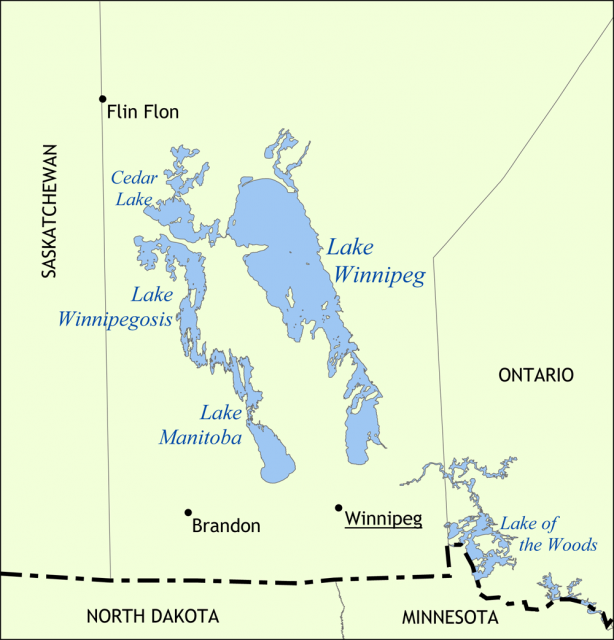Winnipeg, Lake
LOCATED IN THE SOUTHEAST portion of the Canadian province of Manitoba, Lake Winnipeg (Cree for “murky or muddy waters”) is 266 mi (428 km) long and has an area of 9,417 square mi (24,390 square km). English explorer Henry Kelsey was the first European to visit the area in 1690 and is believed to have given the lake its name. The lake has an average depth of 50 ft (14 m), is 713 ft (217 m) at its deepest point, and is located 711 ft (216 m) above sea level. The lake generally is frozen over from November through March.
The lake is part of the huge Nelson River drainage basin, which extends from the Canadian Rockies in western CANADA to near lake SUPERIOR in southwestern Ontario. The lake's watershed measures about 380,001 square mi (984,200 square km). The two largest suppliers of water to the lake are the Winnipeg and Saskatchewan rivers, accounting for 75 percent of the inflow. Other rivers such as the Red, Dauphin, and Berens, make up the remaining 25 percent. The lake itself is drained by the Nelson River, which flows from the northeast part of the lake to Hudson Bay. Spring and summer account for the largest inflow periods for the lake because of the melting of mountain snows and the area's generally wetter springs.

Lake Winnipeg, the 13th-largest lake in the world and the 11th largest freshwater lake, is located in an area known as the Lake Agassiz Basin, which is a remnant of Lake Agassiz, a prehistoric glacial lake. A number of islands are found within the lake including, Hecla, Reindeer, Berens, and Black, which form part of Hecla Provincial Park.
The lake is an important part of the Lake Winnipeg Regulation Project, which is part of Manitoba Hydro's hydroelectric projects on the Nelson River. Manitoba Hydro is in charge of regulating the flow of the lake into the Nelson River, and Lake Winnipeg is used as a natural reservoir for hydroelectric development on the Nelson River.
The main need for regulating the flow of the lake is due to the fact that the natural flow is opposite to the energy needs in the province. More electricity is consumed in winter than in summer, while the water flow into the Nelson River from Lake Winnipeg is naturally the opposite. The lake is also an important recreational and tourism destination especially along the southern shore of the lake, which is located only 30 mi (55 km) from the Manitoba province capital of Winnipeg.The fish population is estimated to number nearly 4 million; major species include whitefish, perch, walleye, and pike. Fishing on Lake Winnipeg yields an average of $15 to 20 million per year.
The lake is also home to a large number of birds, including the endangered piping plover, American white pelican, and bald eagle. Lake Winnipeg marks the western edge of the East-Side Forest, which is a vast boreal wilderness and is considered one of Canada's most significant frontier forests.